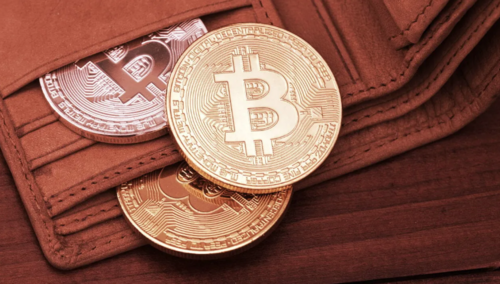

What's in your Bitcoin wallet? Image: Shutterstock
The self-custody of Bitcoin, Ethereum, and other cryptocurrency assets is grabbing much more attention ever since Sam Bankman-Fried's FTX exchange unexpectedly blew up a couple of weeks ago in a whirlwind of drama.
Users of the former third-largest exchange have no idea if they will ever get their money back. With this in mind, many users are deciding to no longer trust centralized exchanges like FTX or Coinbase with their funds.
"If you leave your funds on an exchange, you open yourself up to risk of hacks, frozen withdrawals due to business failure, and insider fraud," self-custody platform Casa CEO and co-founder Nick Neuman told Decrypt, pointing to FTX as a "stark example" of this.
With self-custody, users move their funds in their own wallets that only they control.
"There are similarities between private keys and car keys. When you give the only key to someone else, they can access your car and drive away. If you keep your key, you are free to do whatever you want," said Ledger CEO Pascal Gauthier.
If having full control of your crypto sounds appealing to you, then follow these steps to move your funds from an exchange to a wallet that you own.
A necessary warning before we get started is that though self-custody helps users protect themselves against third parties stealing their money, it requires much tighter personal responsibility.
Users must write down a seed phrase, roughly equivalent to a password that can be used to backup all the addresses tied to the wallet. If the seed phrase is lost, the Bitcoin or crypto tied to it is lost forever.
If you're willing to take on that responsibility, there are tons of options of wallets to use to store your funds.
We'll look at the popular desktop wallet Electrum.
Once you download the Electrum wallet software, after some initial setup you'll be prompted to create a new "seed phrase." This is the important "password" we mentioned. Write down the 12 words. This is the most important step, because if you lose these words, there's no help desk to turn to to get your money back. It's important to keep these words safe and offline. (In other words, don't store these words on a file on your computer or your phone.)
There's plenty of other wallets to choose from, but the flow for whatever wallet you choose is roughly the same: Download the wallet (on desktop or mobile), and then write down the important words that must never be lost or shared. (Important: If you do ever share this seed phrase, the recipient of the phrase will have total access to the contents of the associated wallet.)
Phantom Co-Founder Francesco Agosti at 0xpo Crossroads
One of the minds behind the popular Solana dapp sits down with Decrypt's Jason Nelson at 0xpo Crossroads in San Francisco on November 3 to discuss the history of Phantom and what he’s looking forward to in Web3.
Other cryptocurrencies require different wallets. MetaMask, for instance, is a popular browser and mobile wallet used for self-custody of Ethereum and other compatible tokens. Phantom is the most widely used wallet for Solana and Solana-based assets. And there are many more examples.
Another option with added security is to use a hardware wallet, such as Ledger or ColdCard, which stores the keys in an offline environment, shielding it from potential hacks.
After you've chosen your wallet provider, now it's time to move your funds off the exchange and into your new wallet—a wallet that you (and only you) control.
First you'll need to create a new address in your wallet to which to send your Bitcoin (or other crypto). In Electrum, you click the "receive" button to generate a Bitcoin "address," a chaotic string of numbers and letters, roughly akin to an email address. In MetaMask, Phantom, and other similar browser-based wallets, the address has already been created, and you'll need to click on either "Account" or "Deposit" or a similar button to copy that address to your computer's clipboard.
At your chosen exchange, say Coinbase for instance, there will be some sort of a "Withdraw" button on your account page for each of your assets. In order to send the funds to your wallet, you'll need to click the "Withdraw" button for the corresponding assets ("Bitcoin" for a Bitcoin wallet, "Ethereum" for an Ethereum wallet, and so on), paste in the address from the self-custody wallet you created, and click "Send."
Often, you'll be prompted by the exchange to make sure you're copying the right wallet address, or to confirm that you really do want to withdraw your funds, but the mechanics will be slightly different depending on the exchange you're using.
You've now sent your crypto from an exchange to your own self-custody wallet—so what's next? "Do your own research" (DYOR) is a motto in the Bitcoin sphere because there's lots of information to go through to become as informed as possible about cryptocurrency. Self-custody could be considered its own rabbit hole worth exploring.
There are more complex options for self-custody beyond what we described above.
For instance, "multi-sig" wallet options, such as Casa, offer more flexibility. Instead of just one private key, the wallet is secured by a few at once. That way if the user loses one key, his or her funds are still safe. (Though if two keys go missing, tough luck.)
Some users carve their seed phrase into metal plates for additional peace of mind. If the location where their seed phrase is stored burns down, for example, the seed phrase should still be readable.
And as Neuman points out, the user experience of self-custody is improving all the time. Casa's user experience, for instance, doesn't require writing down or remembering the seed phrase. "Anyone can do it. We believe we can continue to improve it in a way that makes it possible for anyone in the world to hold their own keys safely," Neuman said.
DISCLAIMER
THE VIEWS AND OPINIONS EXPRESSED BY THE AUTHOR ARE FOR INFORMATIONAL PURPOSES ONLY AND DO NOT CONSTITUTE FINANCIAL, INVESTMENT, OR OTHER ADVICE.
